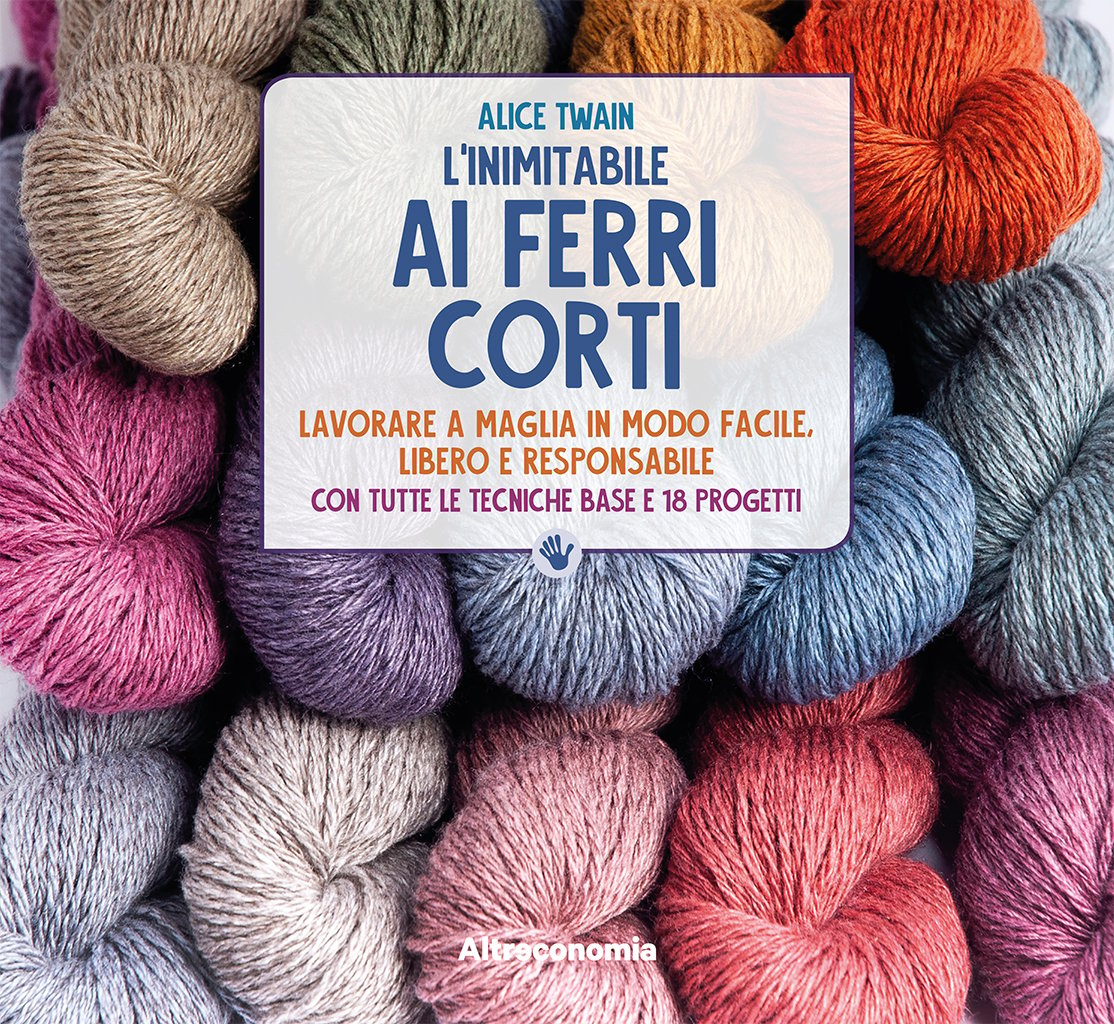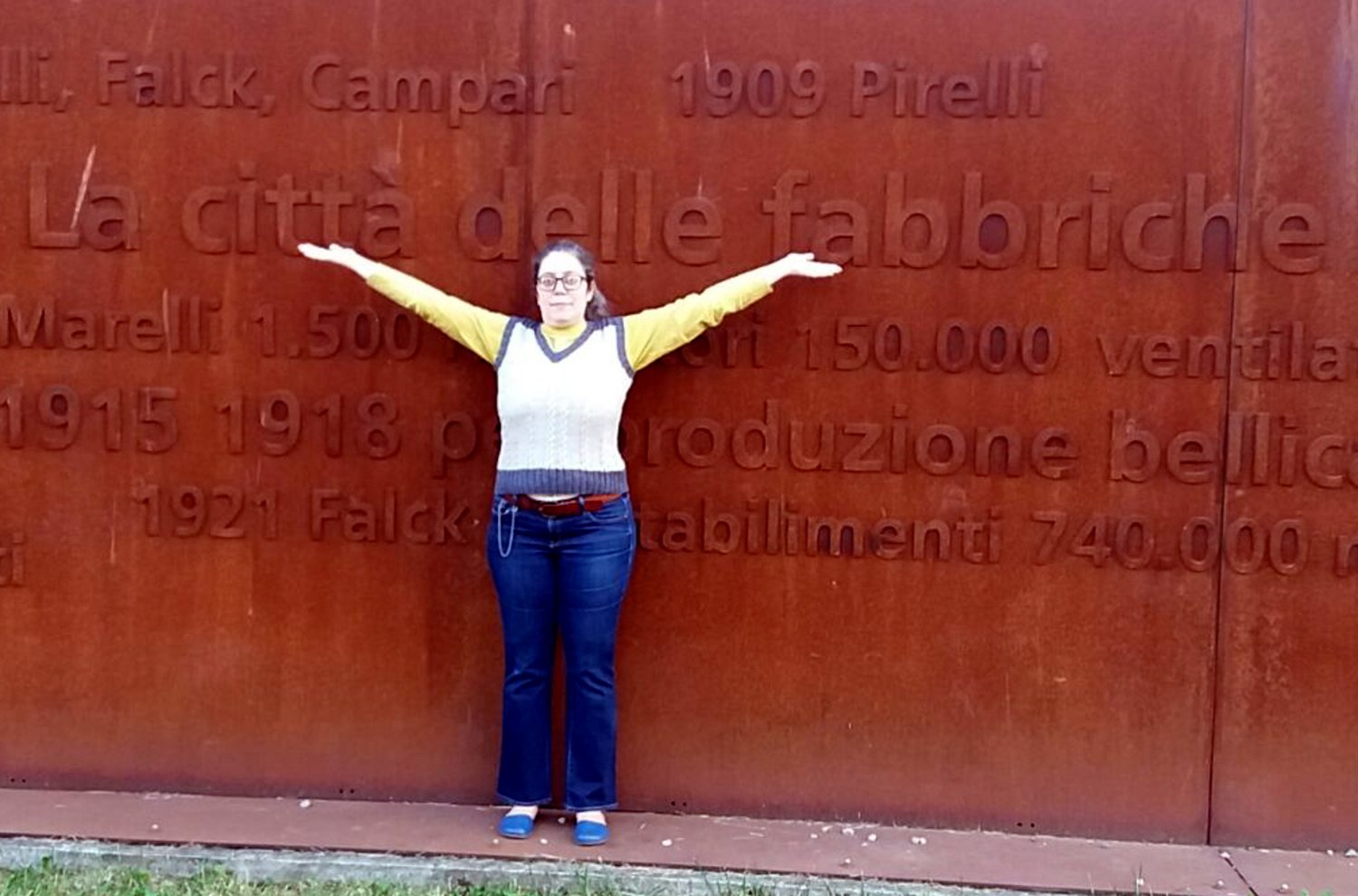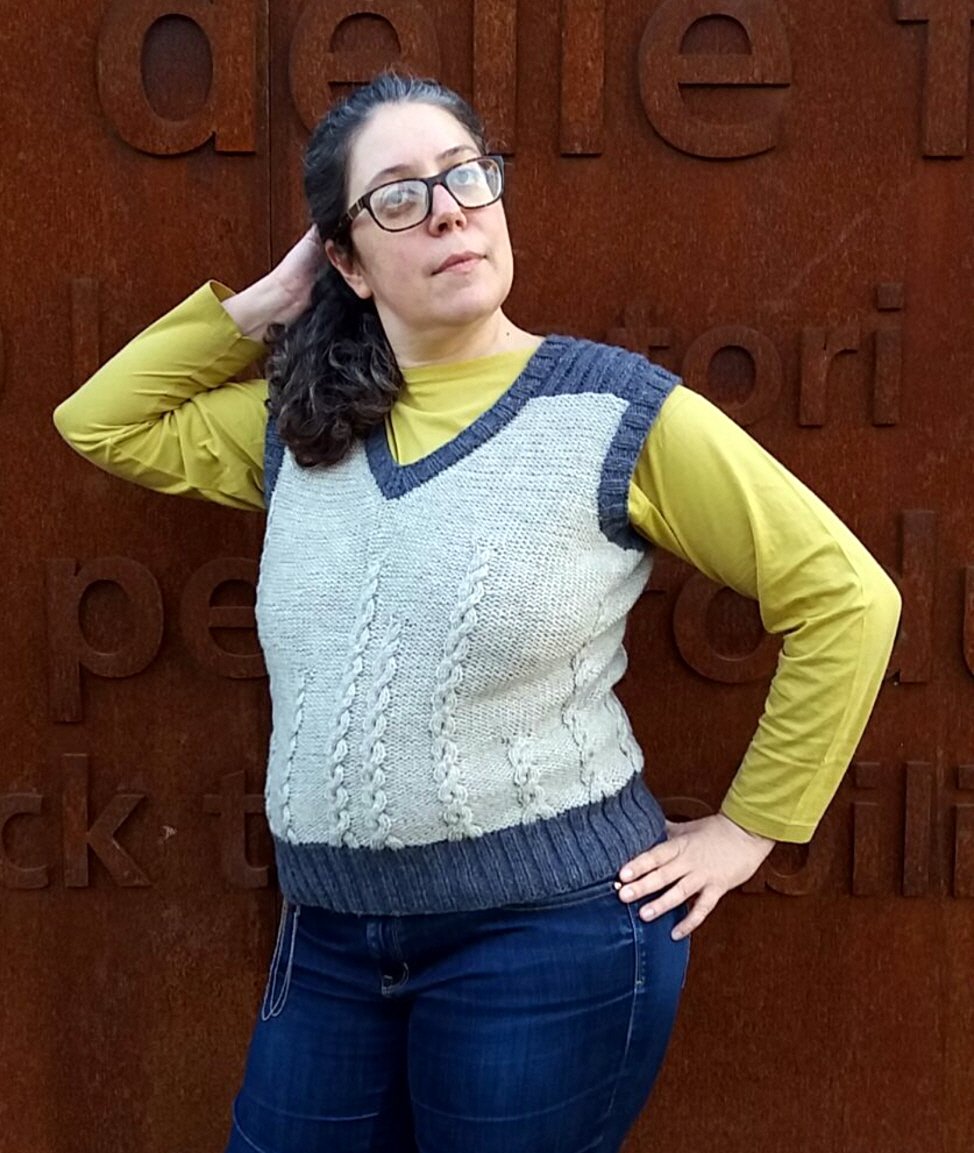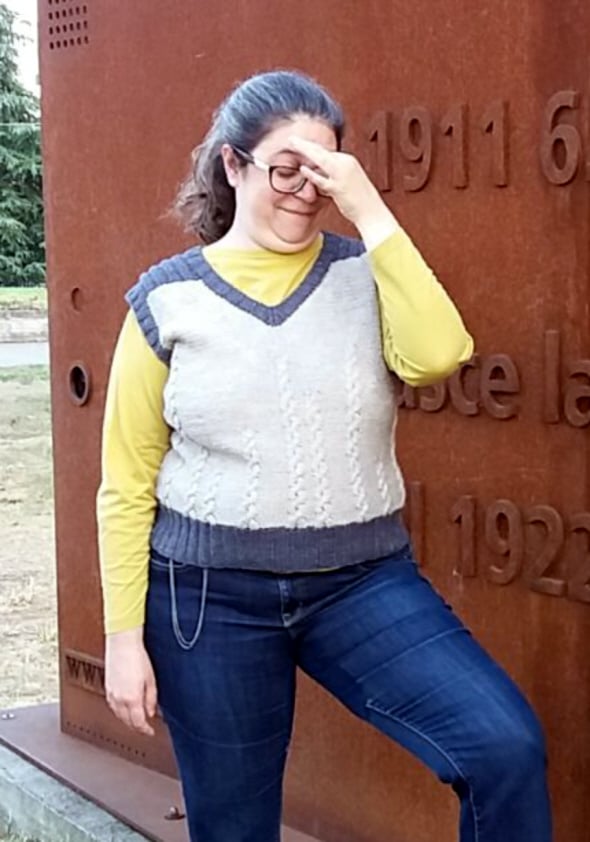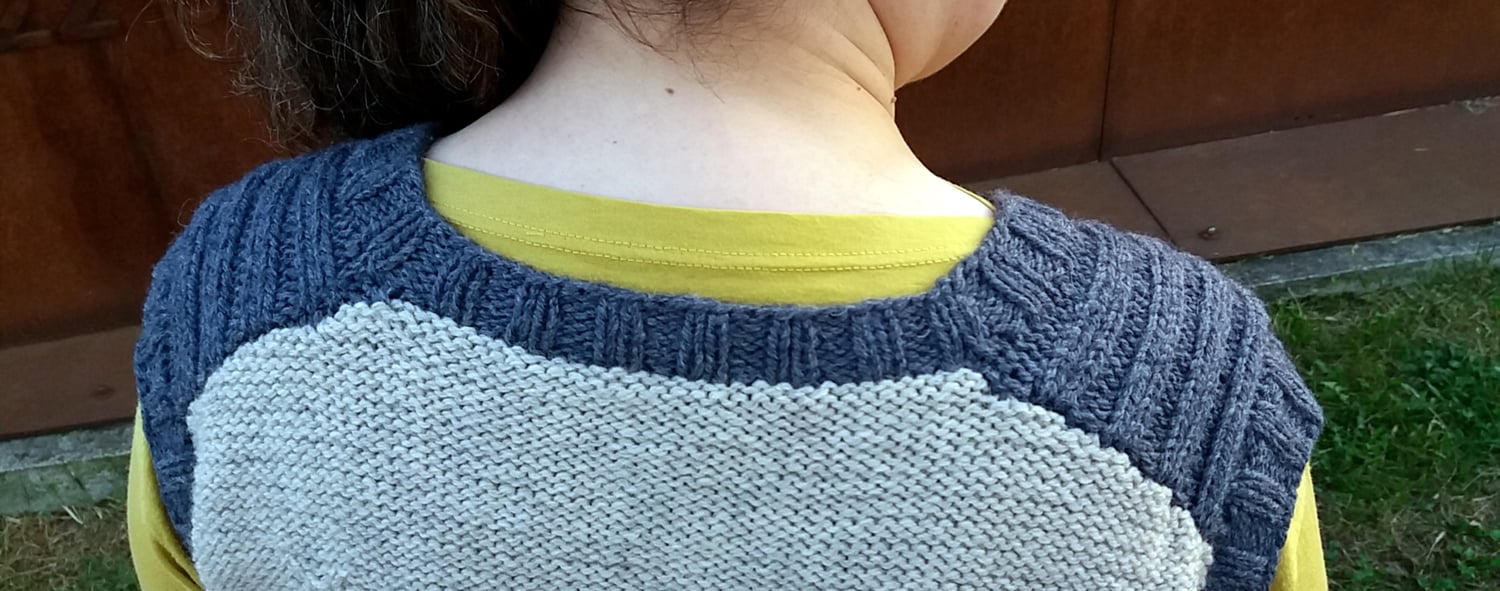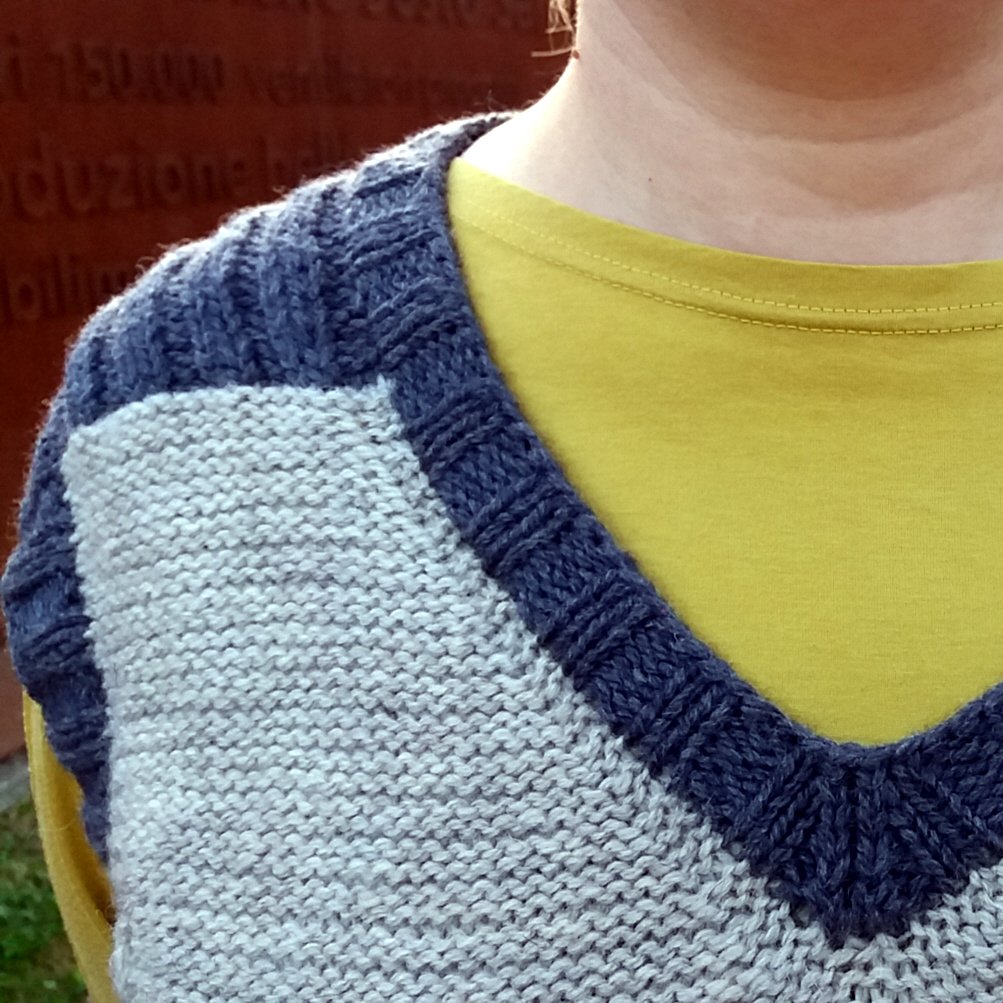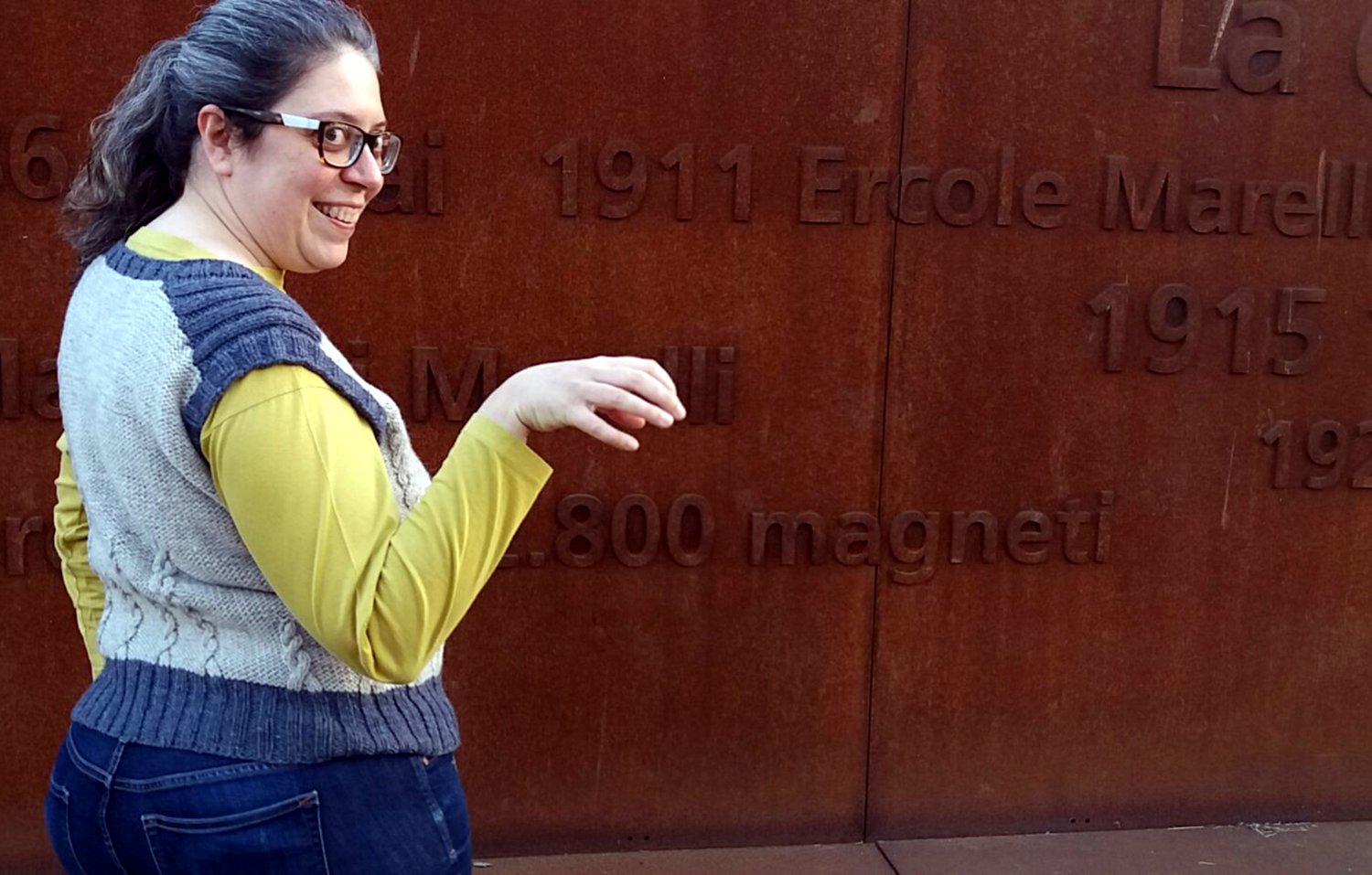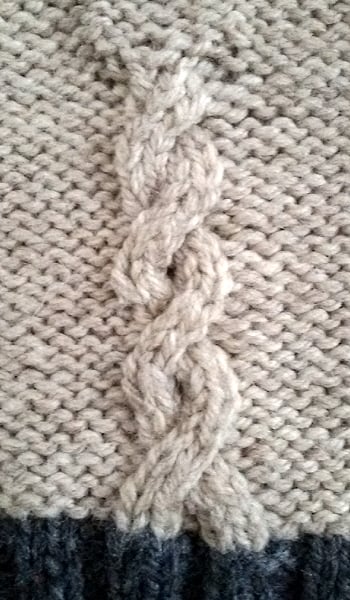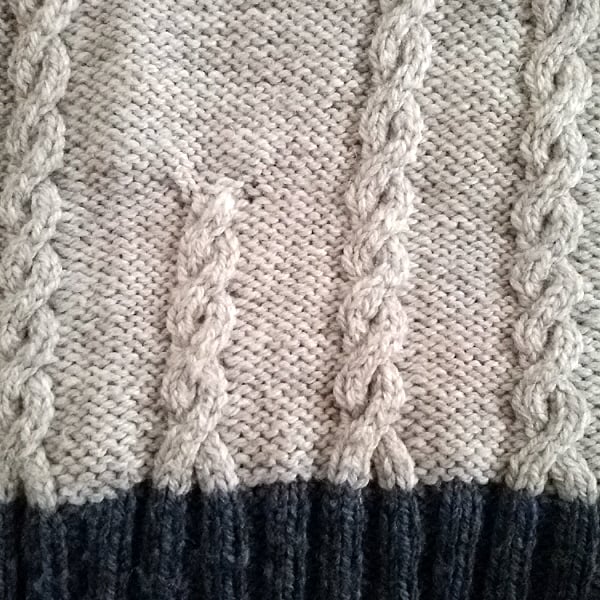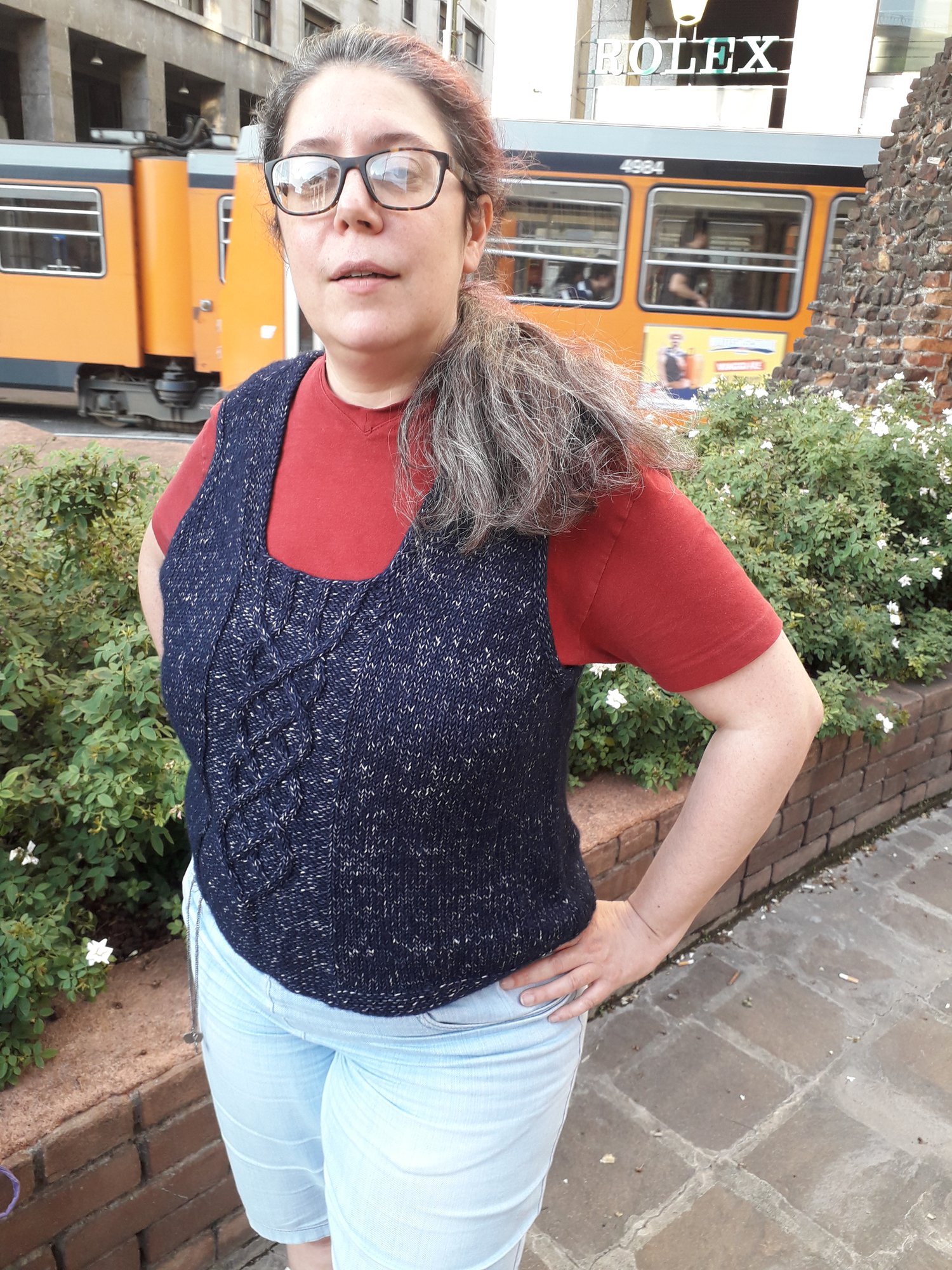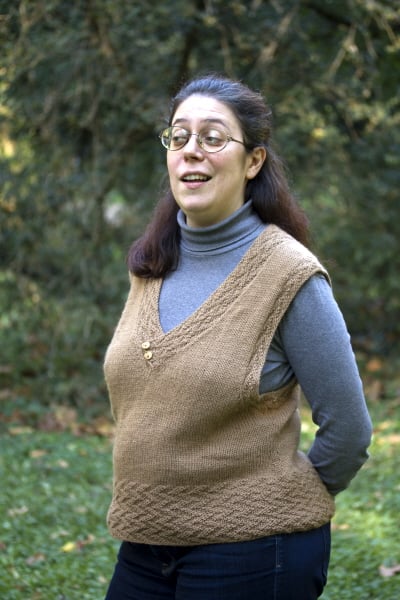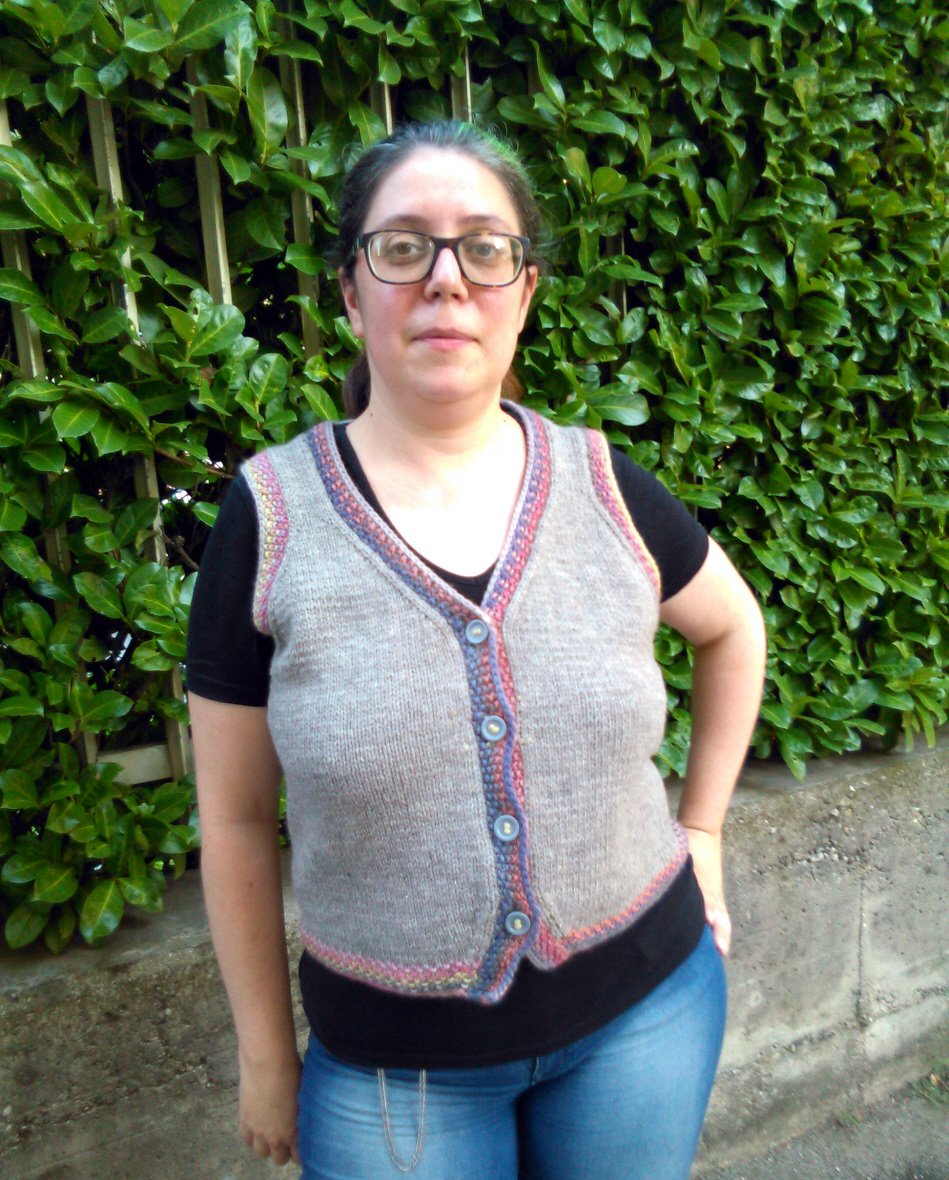La città delle fabbriche
On Sale
€4.00
€4.00
Sesto San Giovanni, the town I was born in and still live in, has a long, glorious past as one of the main industrial towns in Italy. One of its nicknames was “La città delle fabbriche” (the factory town) and almost half of its territory was taken up by plants, mostly steelworks (but there was also the plant that produced the famous Campari drinks). As I grew up, I remember the iron dust collecting on my windowsill and the tall smoke columns released by the chimneys. It was said that anyone living in Sesto breathed air that could be compared to smoking 80 cigarettes a day. In the early AM the workers arrived from the northern towns and villages at the local station and could be seem walking or pedaling on their bikes to the various factories, stopping at bars and “circoli” for an early glass of “grigioverde” (a cocktail of white wine, grappa and a dash of mint) before getting to work. La città delle fabbriche is a vest inspired by those smoke stacks, the bane and pride of the town. Columns of cables of variable length extend from the ribbed waist up (done in a contrasting tone like all borders) to wherever you want to end them, The decreasing number of cables causes the vest to cinch around the waist and become wider around the chest, allowing for both women’s breasts and men’s shoulders. A simple V neck completes this straightforward but rather interesting to knit unisex vest, while the shoulders are topped with more contrasting ribs. Knitted seamlessly, in the round and from the bottom up, “La città delle fabbriche” is worked in Borgo de’ Pazzi’s New Cedro, a 100% organic wool with loads of natural color options. The pattern leaves you free to decide where to position the cables and how tall you want each cable to be. Cables frequency will determine the waist shaping of the vest.
Sono nata e ancora vivo a Sesto San Giovanni, città con un lungo e glorioso passato industriale. Uno dei suoi soprannomi è “La città delle fabbriche” e quasi la metà del territorio comunale è stato occupato, in passato, dagli stabilimenti, soprattutto acciaierie (ma anche la fabbrica che produceva il Campari). I miei ricordi di bambina sono legati alla fuliggine metallica sui davanzali delle finestre e alle colonne di fumo che si alzavano dalle ciminiere. Si disse che l’aria respirata a Sesto equivalesse, per i polmoni, a 80-100 sigarette fumate al giorno per i polmoni. Nelle prime ore del mattino, gli operai scendevano dai treni provenienti da nord e si avviavano, a piedi o in bicicletta, in lunghe colonne verso gli impianti, fermandosi prima del lavoro a bere un veloce “grigioverde” (un cocktail a base di vino bianco, grappa e menta) nei bar e nei circoli cooperativi. Il gilet “La città delle fabbriche” è ispirato a quelle colonne di fumo, croce e delizia della città. Le colonne di trecce di varia altezza si estendono dal bordo a coste (lavorato, come tutti gli altri bordi in colore contrastante) fino a quando desiderate. Il numero calante di trecce fa sì che il gilet sia più stretto in vita e più ampio attorno al petto, lasciando spazio al seno delle donne o alle spalle degli uomini. Un semplice scollo a V completa questo gilet lineare ma piuttosto interessante da lavorare, le cui spalle sono completate da un’ulteriore sezione a coste in colore contrastante. Lavorato in tondo dal basso verso l’alto, senza cuciture, “La città delle fabbriche” è realizzato con New Cedro di Borgo de’ Pazzi, una lana biologica al 100% con numerose opzioni di colore naturale. Il modello è scritto in modo per cui il posizionamento delle trecce sia totalmente libero. La m frequenza delle trecce determina la sagomatura del gilet in vita.
Sono nata e ancora vivo a Sesto San Giovanni, città con un lungo e glorioso passato industriale. Uno dei suoi soprannomi è “La città delle fabbriche” e quasi la metà del territorio comunale è stato occupato, in passato, dagli stabilimenti, soprattutto acciaierie (ma anche la fabbrica che produceva il Campari). I miei ricordi di bambina sono legati alla fuliggine metallica sui davanzali delle finestre e alle colonne di fumo che si alzavano dalle ciminiere. Si disse che l’aria respirata a Sesto equivalesse, per i polmoni, a 80-100 sigarette fumate al giorno per i polmoni. Nelle prime ore del mattino, gli operai scendevano dai treni provenienti da nord e si avviavano, a piedi o in bicicletta, in lunghe colonne verso gli impianti, fermandosi prima del lavoro a bere un veloce “grigioverde” (un cocktail a base di vino bianco, grappa e menta) nei bar e nei circoli cooperativi. Il gilet “La città delle fabbriche” è ispirato a quelle colonne di fumo, croce e delizia della città. Le colonne di trecce di varia altezza si estendono dal bordo a coste (lavorato, come tutti gli altri bordi in colore contrastante) fino a quando desiderate. Il numero calante di trecce fa sì che il gilet sia più stretto in vita e più ampio attorno al petto, lasciando spazio al seno delle donne o alle spalle degli uomini. Un semplice scollo a V completa questo gilet lineare ma piuttosto interessante da lavorare, le cui spalle sono completate da un’ulteriore sezione a coste in colore contrastante. Lavorato in tondo dal basso verso l’alto, senza cuciture, “La città delle fabbriche” è realizzato con New Cedro di Borgo de’ Pazzi, una lana biologica al 100% con numerose opzioni di colore naturale. Il modello è scritto in modo per cui il posizionamento delle trecce sia totalmente libero. La m frequenza delle trecce determina la sagomatura del gilet in vita.
